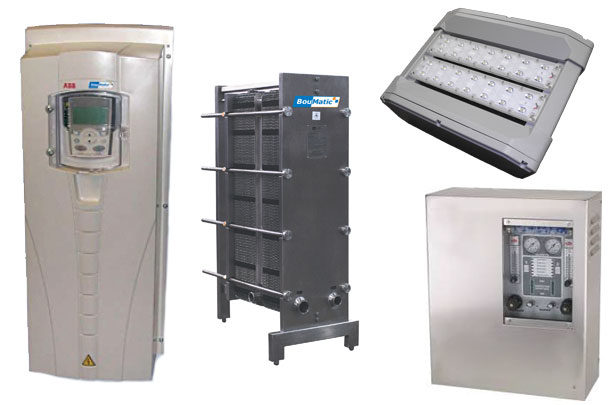All dairy producers want to reduce their operating costs, and installing energy-efficient equipment is one way to help achieve this goal. However, energy efficiency is just one area competing for attention on the farm, so dairies want to make sure any equipment upgrade provides as many benefits as possible.
While many energy-efficiency technologies can pay for themselves in energy savings in a reasonable period of time, they also bring additional benefits to the farm in the form of labor savings, enhanced productivity or better working conditions.
These non-energy benefits provide more reasons for farms to invest in energy efficiency because they provide additional value to the farm and help enhance the overall operation. Here are some technologies that prove their worth on the farm by offering multiple benefits:
Milk vacuum pump variable-speed drive
The milk vacuum pump variable-speed drive has proven energy savings for dairies, and it also benefits dairies in other ways. By regulating the speed of the vacuum pump motor rather than running the motor at a constant high speed, the milk vacuum pump variable-speed drive can reduce the electric use of the pump by 50 to 60 percent. The vacuum pump also provides a noticeably quieter working environment because the pump is no longer running at full speed.
Energy-efficient lighting
Upgrading to energy-efficient lighting is one of the easiest and most cost-effective ways for dairies to save on energy costs. Installing compact fluorescent, pulse-start metal halide, light-emitting diode or T-8 or T-5 lighting can reduce lighting electricity consumption up to 75 percent.
Energy-efficient lighting can provide better color rendering, meaning dairies can more easily observe cow health and thus act more quickly to address a sick cow. A properly lit parlor also improves worker safety and security. Also, energy-efficient lighting lasts longer, reducing the labor involved in replacing burned-out fixtures.
LEDs are becoming a popular choice for exterior lighting on dairies because they last much longer than other types of lighting and provide significant cost savings. Another benefit of LEDs is that they do not contain mercury like other types of lighting, so dairies do not have to worry about disposing of this hazardous waste.
Improved compressor performance
Many energy-efficient technologies also last longer than the conventional alternatives or reduce wear-and-tear on other components, which can add up to additional savings. For example, a compressor heat recovery system captures waste heat from the bulk tank and chiller compressors to pre-heat water. This can extend the life of the refrigeration system and also improve compressor performance – saving money in the long run.
A plate cooler can considerably reduce milk cooling loads when installed in the milk line between the receiver jar and bulk tank. Well water passes through the plate cooler in one direction and absorbs heat from milk passing in the opposite direction.
By cooling the milk more quickly, the plate cooler can inhibit bacterial growth, which increases your milk quality. If permitted by local ordinances, the water used in the plate cooler can be re-used for watering cows or washing, thus saving water in addition to energy.
Ozone laundry
If you have a commercial-grade washing machine on-site, you can retrofit your system to use ozone gas instead of heat and detergent to clean and sanitize your cleaning cloths. An ozone laundry system uses ozone instead of heat and detergent, which can cut water heating and electricity costs.
An ozone laundry system also reduces the use of chemicals used for cleaning and actually kills viruses and bacteria better than bleach. Other non-energy benefits include savings in water, labor and drying time.
These are a few of the most common technologies that work overtime on the farm. They not only save money on your energy costs but also reduce your costs for labor and equipment and, in some cases, improve your milk quality.
When investigating energy-efficient technologies for your farm, make sure to understand the non-energy benefits and look at them as part of your cost-benefit analysis. A comprehensive energy audit meeting the standards of a Type II audit from the American Society of Agricultural and Biological Engineers can identify energy savings on the farm as well as some of the non-energy benefits. PD

-
Kyle Booth
- Engineering Team Lead, CEM
- EnSave Inc.
- Email Kyle Booth







